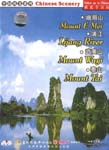Chinese Scenery: Mount E Mei / Lijiang River / Mount Wuyi / Moun
$14.95
In stock
Description
Chinese Scenery: Mount E Mei / Lijiang River / Mount Wuyi / Mount Tai
中国风光系列:峨眉山 / 漓江 / 武夷山 / 泰山
Order No. D4004
ISBN: 7887460700
EAN: 6937475384226
Picture Format: NTSC (good for North American users)
Length: 60 min.
Number of Disc: 1
Language: Chinese with English and Simplified Chinese subtitles
Publisher: China Intercontinental Audiovisual Press
Pub Year: 2007
Price: $14.95
Mount E Mei, located in the southwest of Sichuan province, is one of the Four Buddhist Holy Mountains in China. It is famous for its beautiful landscapes, unique landform, abundant resources of animals and plants, and long history of Buddhist culture. Of all ages, Mount E Mei is the ideal place where people observe the ceremony of Buddhism, sight-see, undertake scientific expeditions and live for health-care. For thousands of years, the Buddhist-incense has been keeping burning and the tourists come one after another. In 1996, Mount E Mei was acknowledged by UNESCO to be Natural and Cultural World Heritage.
Lijiang River is located in the area of Zhuang minority Autonomous Region, Guangxi province. It is considered as the most beautiful and particular water area of Chinese landscapes. On both sides of the wandering more than 100-kilometer-long river, there are stretching peaks with different oulines, the largest-scale and the most beautiful karst landform in the world, and the typical local foldway which combine to create a natural Chinese landscape painting. For thousands of years, Lijiang River is wee-known for its water and mountains.
Mount Wuyi, located in Minnan area, southeast of China, covers an area of 70 square kilometers. It is famous for its “Danxia” landform in the wourld. Besides, its attracting natural landscapes such as Jiuquxi Stream, Thrity-six Peaks, Seventy-two Caves, Ninety-nine Rocks contribute to its reputation as the No. 1 beauty in the southeast of China. Mount Wuyi is not only the place where plants typical of Southeast of China is well protected, but also the best habitat of many endangered animals. In 1999, Mount Wuyi was acknowledged by UNESCO to be Natural heritage as well as the cultural Heritage as shown in the list of World Heritage.
Mount Tai stands loftily in the middle part of Shandong province. Its main peak is called Yuhuangfeng with an attitude of 1,545 meters. Since the ancient times, Mount Tai is invariable proud of being “the seat of five famous mountains” in China. It serves as an epitome of Chinese civilization for thousands of years because of its rich natural and cultural landscapes. In 1987, Mount Tai was officially acknowledged by UNESCO to be the cultural and natural heritage in the list of World Heritage.
Instruction: The following introduction is in Chinese. If your computer doesn’t show Chinese characters, please right click your mouse, select Encoding and then select Chinese Simplified to read in Chinese.
峨眉山是中国四大佛教名山之一,位于中国四川盆地西南,以其优美的自然风光、独特的地质地貌、丰富的动植物资源、悠久的佛教文化而著称于世。古往今来,峨眉山就是人们礼佛朝拜、游览观光、科学考察和休闲疗养的胜地,千百年来香火旺盛、游人不绝。1996年被联合国列入《世界自然与文化遗产名录》。
漓江位于中国广西壮族自治区境内,被认为是中国风光最为美丽独特的水域。蜿蜒数百公里的秀丽江水,两侧连绵不断、形态各异的山峰,世界上规模最大、风景最美的岩溶地貌,以及独特的民族风情,造就了一幅浑然天成的中国山水画,千百年来,一直有“漓江山水甲天下”的美誉。
武夷山位于中国东南部的闽南山区,总面积约70平方公里,这里以丹霞地貌著称于世,自然风景优美,九曲溪,与三十六峰、七十二洞、九十九岩的绝妙结合,被誉为“奇秀甲东南”。武夷山地区不仅是中国东南部植物品种保护最好的地方,也是很多濒危动物的栖息地。1999年,作为文化与自然双重遗产,被联合国教科文组织列入《世界遗产名录》。
泰山雄峙于山东省中部,主峰为玉皇峰,海拔1545米。自古以来,泰山就有“五岳之首”、“五岳独尊”的称誉。泰山,因为极其丰富的自然景观和文化景观,使它成为中国几千年古老文明的缩影,1987年,泰山正式被联合国教科文组织作为文化和自然双重遗产列入《世界遗产名录》。
Additional information
| Weight | 1 lbs |
|---|
Related products
-
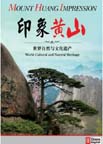
Mount Huang Impression (Yellow Mountain)
$14.95 Add to cart -

Tour in China Series: Hangzhou
$14.95 Add to cart -

Tour in China Series: Guangzhou
$14.95 Add to cart -
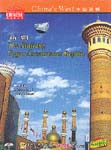
The Xinjiang Uygur Autonomous Region
$14.95 Add to cart -
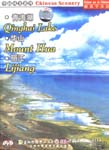
Chinese Scenery: Qinghai Lake / Mount Hua / Lijiang
$14.95 Add to cart -
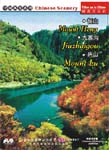
Chinese Scenery: Mount Heng / Jiuzhaigou / Mount Lu
$14.95 Add to cart

